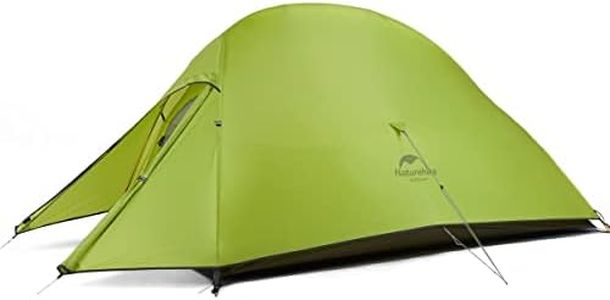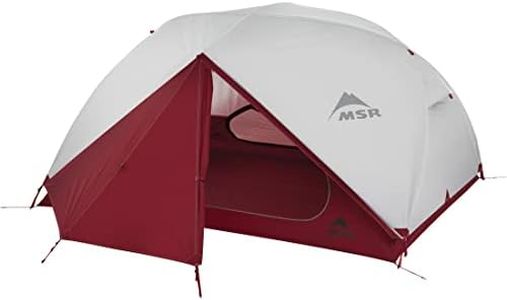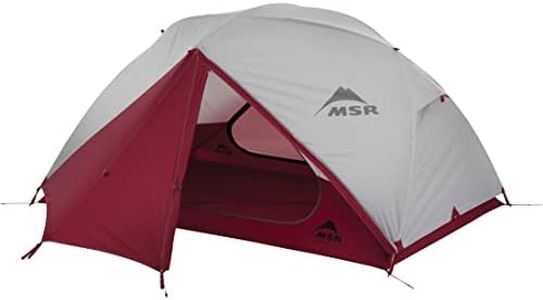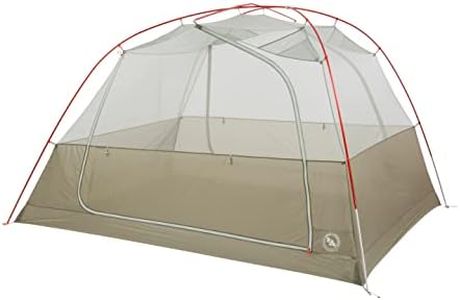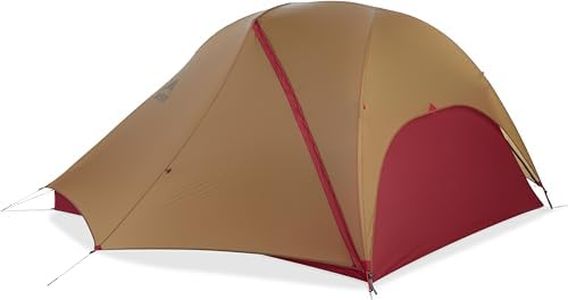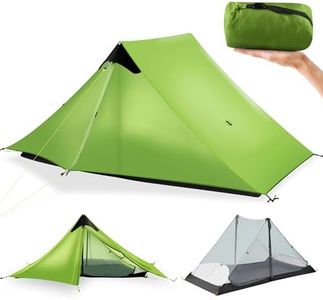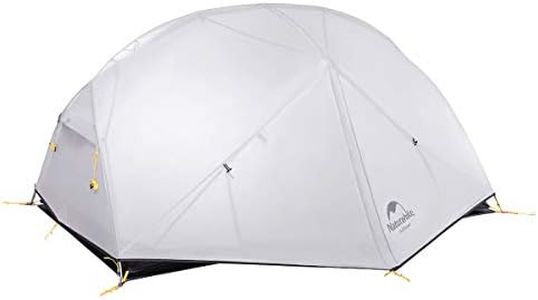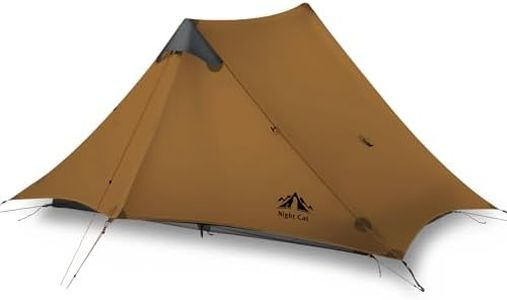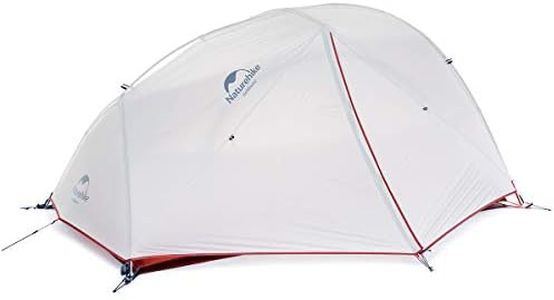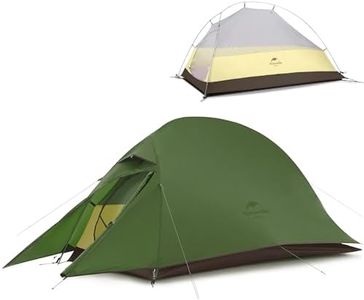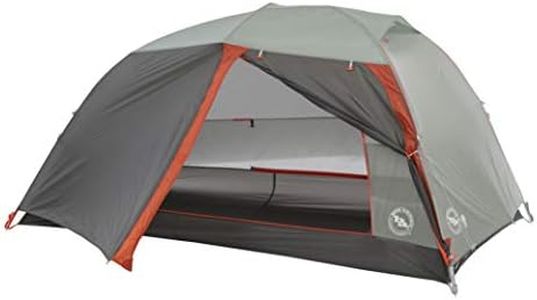We Use CookiesWe use cookies to enhance the security, performance,
functionality and for analytical and promotional activities. By continuing to browse this site you
are agreeing to our privacy policy
10 Best Ultralight Tents
From leading brands and best sellers available on the web.Buying Guide for the Best Ultralight Tents
Choosing the right ultralight tent is key for anyone looking to enjoy backpacking or hiking without carrying extra weight. The goal is to balance durability, comfort, and protection from the elements while keeping your pack as light as possible. Understanding your specific needs—like the environments you'll encounter, how often you'll use the tent, and whether you'll be going solo or with a partner—will help you pick the best fit for your adventures.WeightWeight is one of the defining characteristics of an ultralight tent, referring to how heavy the tent is when packed. This is crucial because carrying less weight makes hiking and backpacking easier and more enjoyable. Tents can generally be divided into categories like under 2 pounds (super ultralight), between 2 to 3 pounds (standard ultralight), and over 3 pounds (lightweight, but not ultralight). Super ultralight tents are best for experienced backpackers who are willing to compromise on comfort and features, while standard ultralight tents make sense for most people looking for a balance. Picking the right weight depends on how much gear you’re willing to carry and the kind of conditions you expect to face.
CapacityCapacity tells you how many people a tent is designed to shelter, such as 1-person, 2-person, or even more. It's important because it affects both comfort and pack size. A solo backpacker searching for the lightest option might choose a 1-person tent, while two people usually need a 2-person tent for space and gear storage. Some people prefer a tent with a higher capacity than the number of sleepers for extra comfort, but this comes at the cost of added weight.
Season RatingSeason rating indicates the range of weather and temperature the tent can handle, with 3-season tents being common for ultralight models. This matters because it defines how well your tent will perform in wind, rain, and temperature changes. 3-season tents are designed for spring, summer, and fall, offering ventilation and weather protection for most conditions. If you rarely camp in snow or harsh winter conditions, a 3-season tent is likely enough. For winter use, look for sturdier 4-season models, but these are usually heavier.
Setup StyleSetup style refers to how the tent is pitched, such as freestanding, semi-freestanding, or non-freestanding. This affects ease of use and flexibility. Freestanding tents can stand on their own, ideal for rocky or hard ground, but are often a bit heavier. Non-freestanding tents require trekking poles and stakes for support, making them lighter but a little trickier to set up, especially on tricky terrain. If you value simplicity and ease, go for freestanding or semi-freestanding; if weight savings are your top priority and you're comfortable with more complex setup, non-freestanding is best.
Material and DurabilityMaterial and durability refer to the types of fabrics and components used in making the tent, which directly relates to its weight, waterproofness, and how long it will last. Most ultralight tents use thin nylon or polyester, sometimes with special coatings for waterproofing. Lower denier numbers mean lighter but more delicate fabric, while higher denier materials are tougher but weigh more. If you're gentle with your gear and prioritize lightness, go for lighter fabrics; if you need a tent that can withstand more wear and tear, look for higher durability specs.
VentilationVentilation describes how well a tent can let moisture escape, preventing condensation inside the tent. Good ventilation is important because it keeps you comfortable and your sleeping gear dry, especially in humid or rainy conditions. Some tents feature mesh panels, vents, or adjustable fly designs. If you'll be camping in hot or wetter climates, prioritize tents with more ventilation options.
Packed SizePacked size is the amount of space the tent takes up when stored in its bag. This is relevant when organizing your backpack and deciding what else you can bring. Some ultralight tents pack down as small as a water bottle, while others are longer or bulkier. If space in your pack is limited or you're carrying a smaller bag, pay close attention to packed size and look for the most compact tents that still meet your needs.
